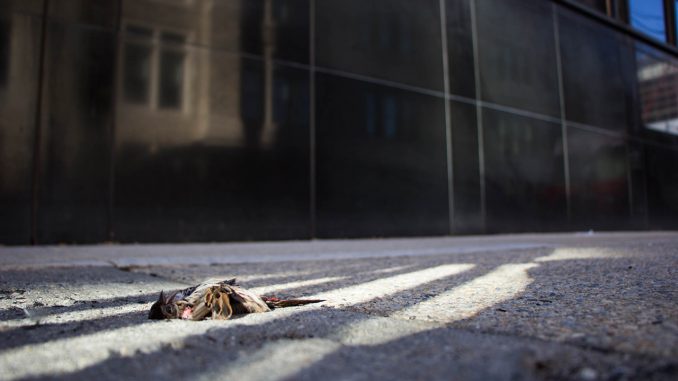
As the season’s change in the fall and spring, students may notice an unfriendly sight on the sidewalks around campus: dead birds.
“There are so many, especially where I live right now,” said Adison Christiansen, a junior dance major. “Just every day. I just try not to step on them, try to avoid them.”
“I’ve seen one outside of Morgan Hall, one around Wachman Hall,” said Caleb Sperling, a junior advertising major. “I have seen them around here. It’s concerning. I don’t know why it’s happening. It definitely feels unsettling. It’s never a good feeling to see a dead creature.”
Approximately 100-200 birds die every year from flying into Main Campus buildings, said Glenn Eck, associate director of grounds operations. This most commonly happens during the birds’ fall and spring migration patterns.
Resting on the Atlantic Flyway, a major thoroughfare for traveling birds, Philadelphia is an “epicenter” of migration, Eck added.
“That’s the only time of year we would notice the bird strikes piling up under windows,” Eck said.
Migration season in the fall typically lasts from late summer into November, while in the spring most birds migrate during April and May, according to the Audubon Society, a national bird preservation organization.
The university has implemented several measures to prevent bird strikes.
An effective solution for reducing bird strikes on campus has been installing laminated grid patterns on glass, Eck said. Since 2014, the university has tested the grids on the walkway between the former Paley Library and Tuttleman Learning Center.
Before the grids were installed, “you could see the smudge marks on the glass from the inside where the birds had struck, and you don’t see that anymore,” Eck said.
The university is also considering installing fritted glass on future buildings, which is porous and less dangerous for birds, said Eck and Rebecca Collins, the university’s director of sustainability.
“Bird strikes are definitely on our planning folks’, our design and architecture teams’ radar,” Collins said.
In the mid-2000s, Eck’s grounds team and a local chapter of Audubon worked together to track where birds were striking windows on campus and which species were most likely to die, he said.
Contrary to popular belief, buildings constructed of all glass are not necessarily more prone to bird strikes, Eck said. Though his team has found birds outside of the Charles Library and 1810 Liacouras Walk, they also die frequently outside the Student Center and the Tyler School of Art and Architecture, he said. Likewise, Eck never finds dead birds outside of Morgan Residence Hall or Pearson and McGonigle halls, which have a lot of glass construction.
“It makes it difficult at the design level, because obviously any kind of fritted glass … those things, there’s an upsurge for and you may not even need them,” Eck said. “It really starts to make a lot of sense to do some of it at the retrofit level, because then you can focus on where the problems are.”
“We can go back and start making considerations when we do renovations or new buildings, and then again like, we can retrofit as needed,” Collins said.


Be the first to comment